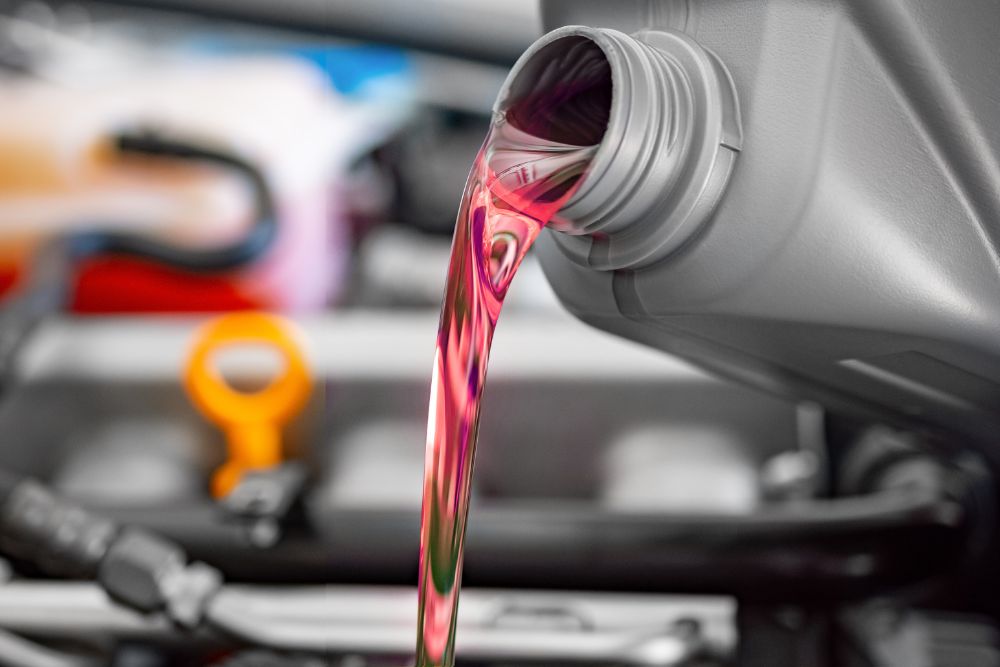
When it comes to maintaining your high-performance vehicle’s transmission, choosing between OEM and aftermarket transmission fluids can significantly impact your car’s performance and longevity. Understanding the differences between these options helps you make an informed decision that best suits your vehicle’s specific needs and your driving style.
Key Differences Between OEM and Aftermarket Transmission Fluids
Manufacturing Standards and Specifications
OEM (Original Equipment Manufacturer) transmission fluids are produced to meet the exact specifications set by your vehicle’s manufacturer. These fluids undergo rigorous testing to ensure they match the precise viscosity, friction modifiers, and additive packages that your transmission was designed to use. Car manufacturers spend considerable time and resources developing these formulations to work perfectly with their specific transmission designs, materials, and operating parameters.
Aftermarket transmission fluids, on the other hand, are produced by independent companies that specialise in lubricants and automotive fluids. These manufacturers often create universal formulations designed to work across multiple vehicle makes and models. While many aftermarket options meet or exceed OEM specifications, they take a different approach by focusing on broader compatibility and often enhanced performance characteristics.
The manufacturing process also differs significantly between the two options. OEM fluids typically come from a limited number of suppliers who work directly with car manufacturers, ensuring consistent quality and formulation. Aftermarket producers range from large multinational corporations to smaller specialist companies, each with their own quality control processes and formulation philosophies.
Chemical Composition and Additives
The chemical makeup of transmission fluids varies considerably between OEM and aftermarket options. OEM fluids contain specific additive packages tailored to work with the metals, seals, and clutch materials used in particular transmissions. These additives include friction modifiers, anti-wear agents, viscosity improvers, and corrosion inhibitors in precise proportions.
Aftermarket fluids often feature advanced synthetic base oils and enhanced additive packages designed to provide superior protection and performance. Many aftermarket manufacturers invest heavily in research and development to create formulations that offer improved heat resistance, better shear stability, and improved cleaning properties compared to standard OEM fluids. Some speciality aftermarket fluids are specifically engineered for high-performance applications, offering benefits that exceed what OEM fluids can provide.
The base oil quality can also differ between options. While many modern OEM fluids use synthetic or synthetic-blend base oils, some still rely on conventional mineral oils for cost considerations. Premium aftermarket fluids typically use full synthetic base oils, which provide better temperature stability and longer service life, particularly important for performance vehicles that generate more heat during spirited driving.
Performance Characteristics
OEM transmission fluids deliver predictable, reliable performance that matches your vehicle manufacturer’s intentions. They provide the exact shift feel, engagement characteristics, and protection levels that the transmission was calibrated for during development. This means smooth, consistent operation under normal driving conditions and adherence to the manufacturer’s service intervals.
Aftermarket fluids can offer improved performance characteristics that benefit specific driving styles or conditions. High-quality aftermarket options often provide better high-temperature stability, making them ideal for track use or aggressive driving. They may also offer improved cold-weather performance, faster shifting response, and extended drain intervals. Some aftermarket fluids are formulated to reduce transmission temperatures, which can extend component life in high-stress applications.
The viscosity stability of fluids under extreme conditions represents another key performance difference. Premium aftermarket fluids often maintain their viscosity better under high shear conditions, which occurs in performance driving situations. This stability translates to more consistent shift quality and better protection when pushing your vehicle to its limits.
Cost Considerations
OEM transmission fluids typically carry a premium price when purchased through dealerships. The cost reflects not only the fluid itself but also the dealer markup and the assurance of using manufacturer-approved products. For exotic and high-end European vehicles, OEM fluid costs can be particularly steep, sometimes exceeding several hundred dollars for a complete fluid change.
Aftermarket options generally offer more competitive pricing, though this varies widely based on quality and brand reputation. Basic aftermarket fluids can cost significantly less than OEM alternatives, while premium synthetic options might approach or even exceed OEM pricing. However, the potential for extended service intervals with high-quality aftermarket fluids can offset the initial cost difference over time.
Value considerations extend beyond just the fluid price. Quality aftermarket fluids may offer better protection against wear and heat damage, potentially reducing long-term maintenance costs. For performance vehicles that see track use or aggressive driving, investing in premium aftermarket fluids can prevent costly transmission repairs down the line.
Important Factors to Consider When Choosing Transmission Fluid
Vehicle Warranty Implications
Using non-OEM transmission fluid during your vehicle’s warranty period requires careful consideration. Manufacturers can deny warranty claims if they prove the aftermarket product caused the failure. Documentation becomes crucial when using aftermarket fluids, including keeping receipts and ensuring the fluid meets or exceeds OEM specifications.
For high-end European and exotic vehicles, warranty considerations become even more critical. Manufacturers like Porsche, BMW, and Mercedes-Benz often specify exact fluid requirements, and deviating from these specifications could complicate warranty claims. Working with a reputable service centre that understands these requirements helps ensure proper fluid selection and documentation.
Post-warranty vehicles offer more flexibility in fluid choice. Once warranty coverage expires, many owners switch to high-quality aftermarket fluids that provide better performance or value. This transition often coincides with more aggressive driving or track use, where enhanced fluid properties become beneficial.
Transmission Type and Design
Different transmission designs have varying fluid requirements that influence the OEM versus aftermarket decision. Dual-clutch transmissions (DCT) found in many performance vehicles require fluids with specific friction characteristics to ensure proper clutch engagement and smooth shifting. Using incorrect fluid in these transmissions can lead to harsh shifts, premature wear, or complete failure.
Traditional automatic transmissions generally offer more flexibility in fluid choice, as many aftermarket options are formulated to work across various designs. However, modern automatics with 8, 9, or 10 speeds often have tighter tolerances and more specific fluid requirements. CVT transmissions require specialised fluids with unique friction properties, limiting aftermarket options.
Manual transmissions and sequential gearboxes in performance applications often benefit from aftermarket fluids designed for racing use. These fluids typically offer superior protection under extreme conditions and may include additives that reduce gear noise and improve shift feel. Understanding your specific transmission design helps guide the appropriate fluid choice.
Driving Conditions and Usage Patterns
Your driving style and conditions significantly influence the optimal fluid choice. Daily drivers operating in normal conditions often perform well with OEM fluids, which provide adequate protection and performance for typical use. The predictable service intervals and known performance characteristics make OEM fluids a safe choice for conservative drivers.
Performance driving, whether on track or spirited road use, places extreme demands on transmission fluid. High temperatures, rapid shifts, and sustained high-load operation can quickly degrade standard fluids. Premium aftermarket fluids designed for racing or performance use offer superior heat resistance and maintain their protective properties under these demanding conditions.
Environmental factors also play a role in fluid selection. Vehicles operating in extreme cold benefit from fluids with superior low-temperature flow characteristics, while those in hot climates need excellent high-temperature stability. Some aftermarket fluids excel in specific temperature ranges, making them ideal for particular climates or seasonal use.
Making the Right Choice for Your Vehicle
The right choice for your vehicle is going to greatly depend on your specific needs.
If you are not concerned about warranty and use the car for performance driving, often times an aftermarket fluid is the best choice (depending on the specific fluid).
However, if the car is a daily driver, only used on the road and is still under warranty, OEM fluid is typically the best option.
Need Expert Guidance on Transmission Fluid Selection?
Choosing the right transmission fluid for your high-performance vehicle requires expertise and understanding of your specific needs. At Dodson, we specialise in premium transmission serving for high-end, exotic, and performance vehicles, offering professional guidance on both OEM and aftermarket fluid options.
Our experienced technicians understand the unique requirements of DCT, DSG, SST, PDK, and other performance transmissions, ensuring your vehicle receives the optimal fluid for its design and your driving style. Contact our team today by calling 09 441 3635 to discuss your transmission service needs so that we can help maintain your vehicle’s peak performance.

 Looking for Dual Clutch transmission components outside of New Zealand?
Looking for Dual Clutch transmission components outside of New Zealand?